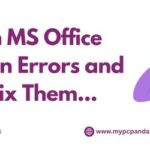A mainstay of the cinema, television, and digital content industries for a long time is visual effects (VFX). Artificial intelligence (AI) has caused Adobe After Effects to advance at a never-before-seen rate, making high-quality visual effects (VFX) more affordable and effective than ever. Let’s examine how AI transforms After Effects’ visual effects and what it means for filmmakers and motion designers.
AI-Powered Rotoscoping
Rotoscoping— separating characters from their backgrounds frame by frame—is one of the most time-consuming VFX operations. AI-powered products, such as Adobe’s Roto Brush 2, save countless hours of human labor by automatically tracking and refining selections using machine learning.
Automated Motion Tracking and Object Removal
Additionally, AI has improved motion tracking, enabling smoother and more precise effects. By examining the surrounding pixels and filling in the blanks, After Effects’ Content-Aware Fill function uses artificial intelligence (AI) to eliminate undesired elements from a scene intelligently. Post-production cleanup becomes quicker and more effective as a result.
Intelligent Scene Reconstruction
Artists can now produce 3D models and camera tracking more accurately thanks to AI-driven scene reconstruction. Realistic camera motions and the smooth integration of CGI elements are made possible by AI algorithms that evaluate video and rebuild depth.
Smart Video Upscaling and Frame Interpolation
By intelligently upscaling low-resolution footage while maintaining details, AI-powered technologies like Super Resolution can improve video quality. In a similar vein, AI-powered frame interpolation produces intermediate frames to smooth slow-motion scenes and produce more organic movement.
AI-Enhanced Animation and Effects
AI-assisted character rigging and automatic lip-syncing are just two examples of how machine learning advancements are helping After Effects optimize animation processes. Based on taught data models, AI may improve particle simulations, recommend motion pathways, and even provide stylistic effects.
The Future of AI in VFX
We can anticipate many more developments in After Effects as AI develops, which will enable designers to create high-quality visual effects with less work. In addition to saving time, integrating AI-powered technologies allows for more inventive and creative exploration.
Artists may concentrate on what matters—realizing their artistic vision—by using AI to handle labor-intensive chores. AI is leveling the playing field and lowering the barrier to entry for high-end visual effects, regardless of experience level.
This post was created with our nice and easy submission form. Create your post!





